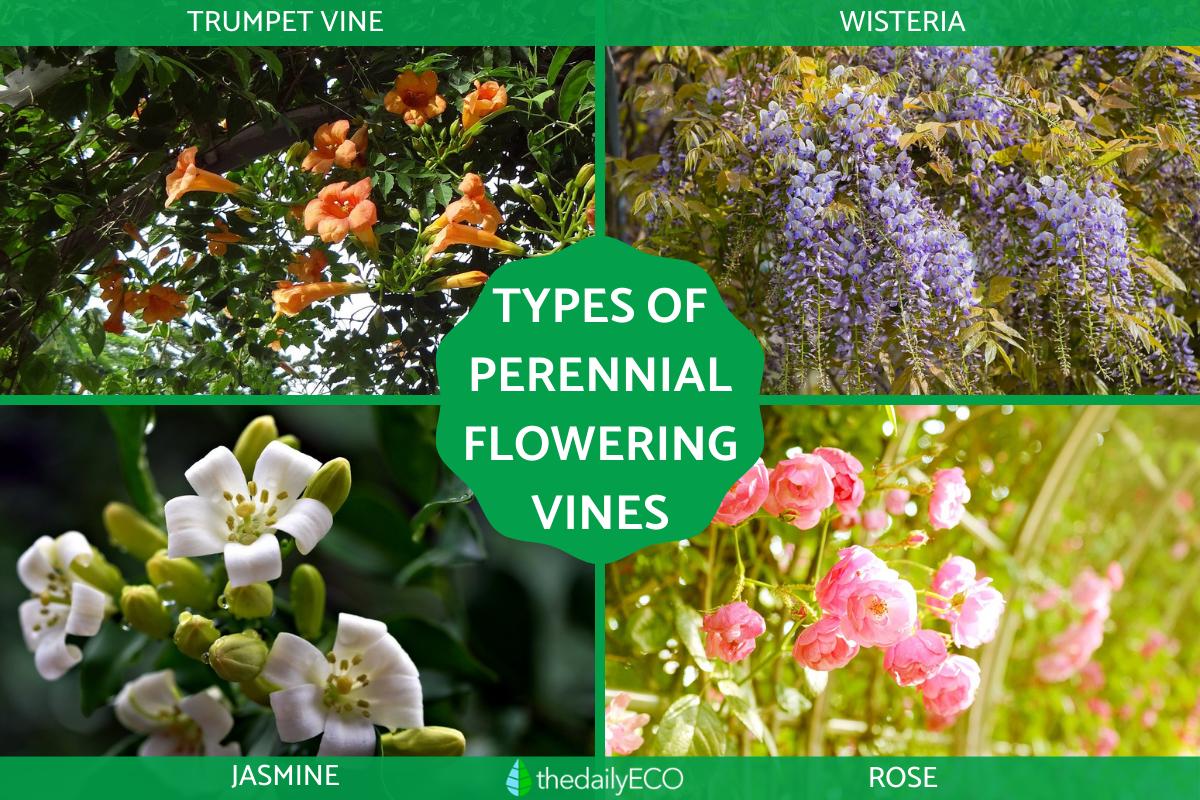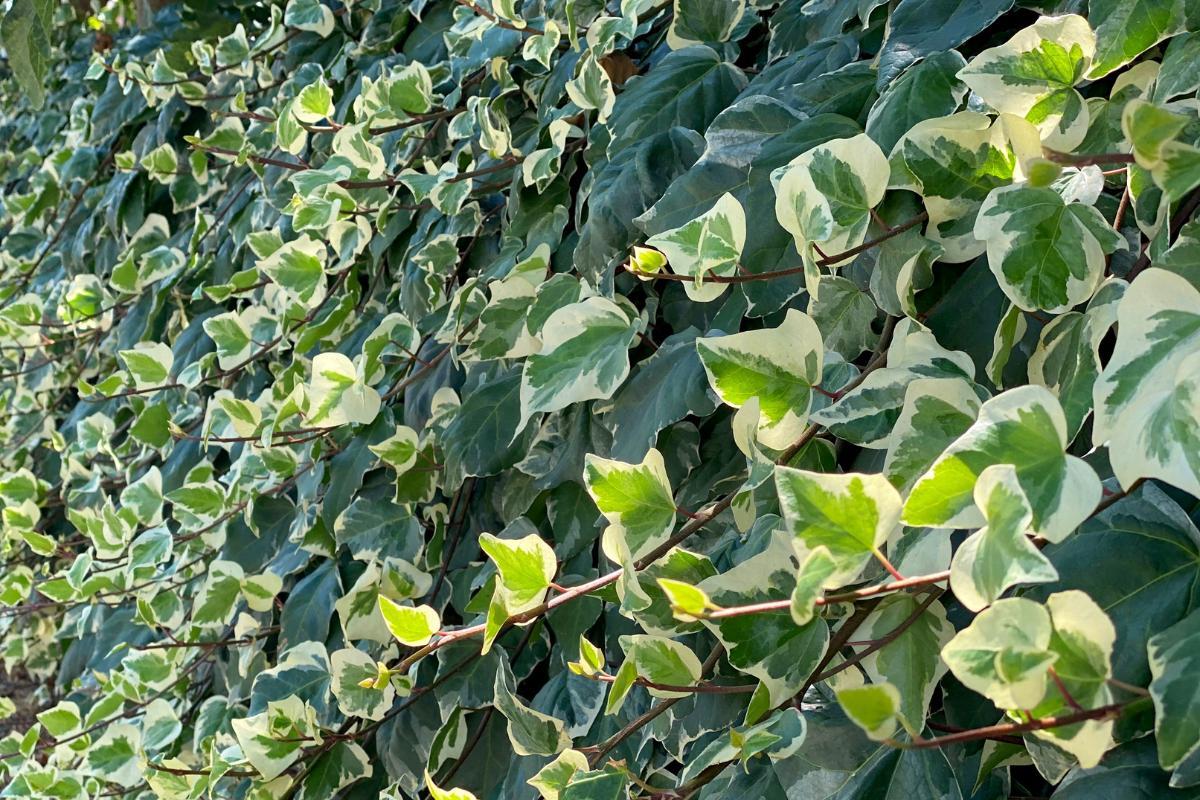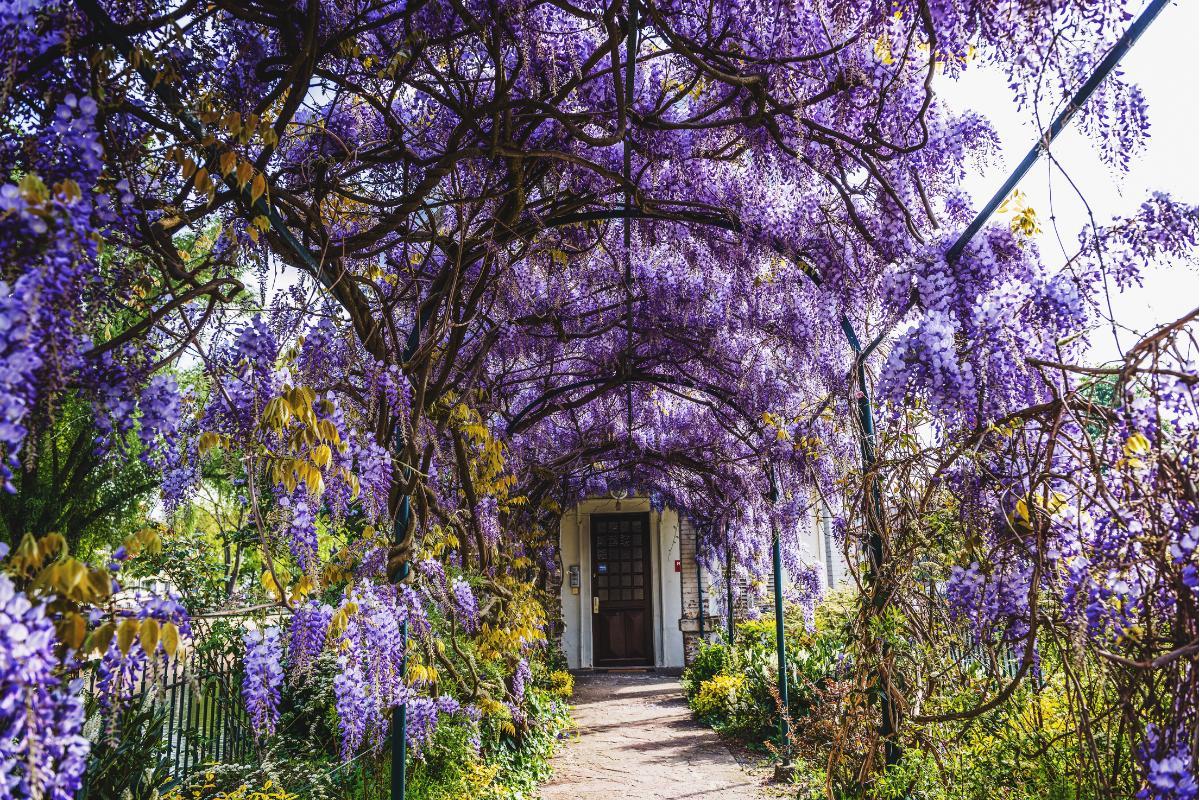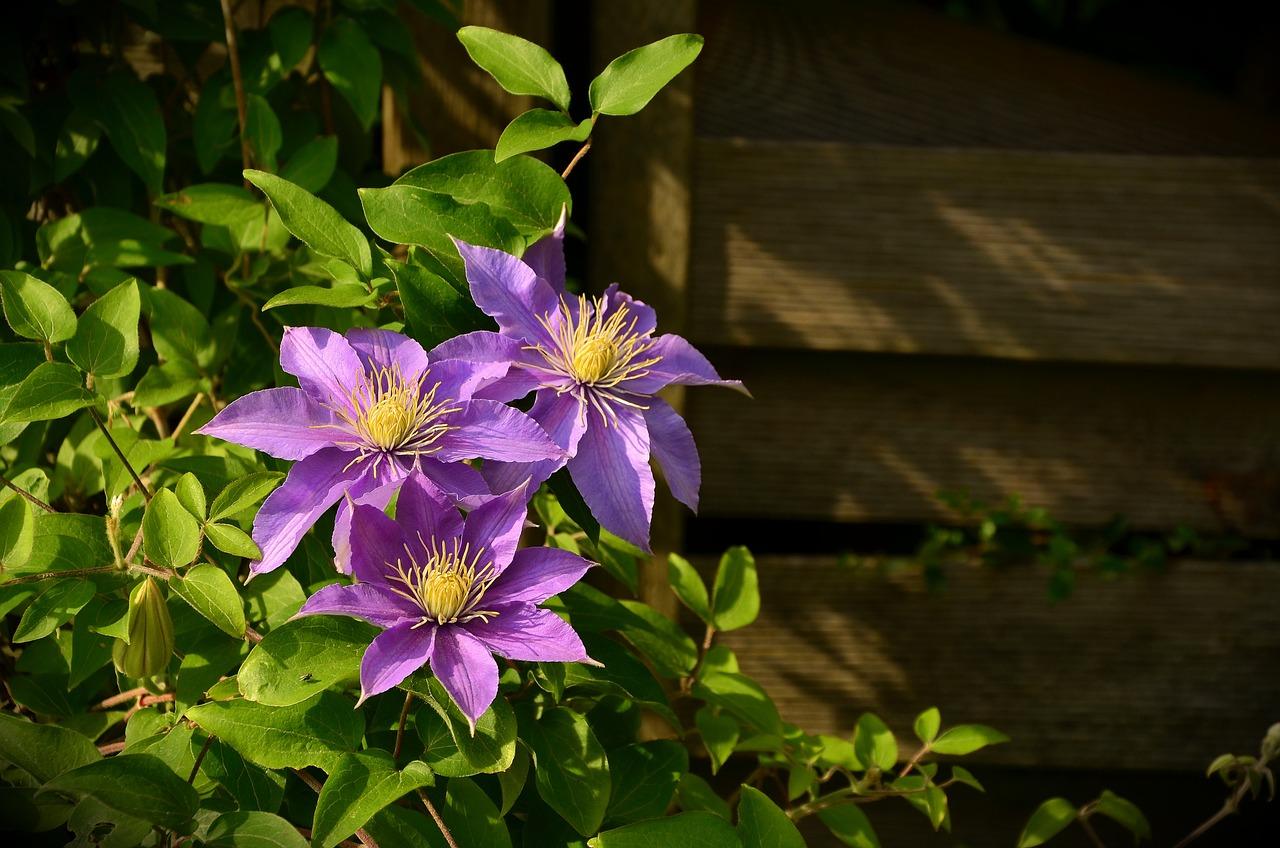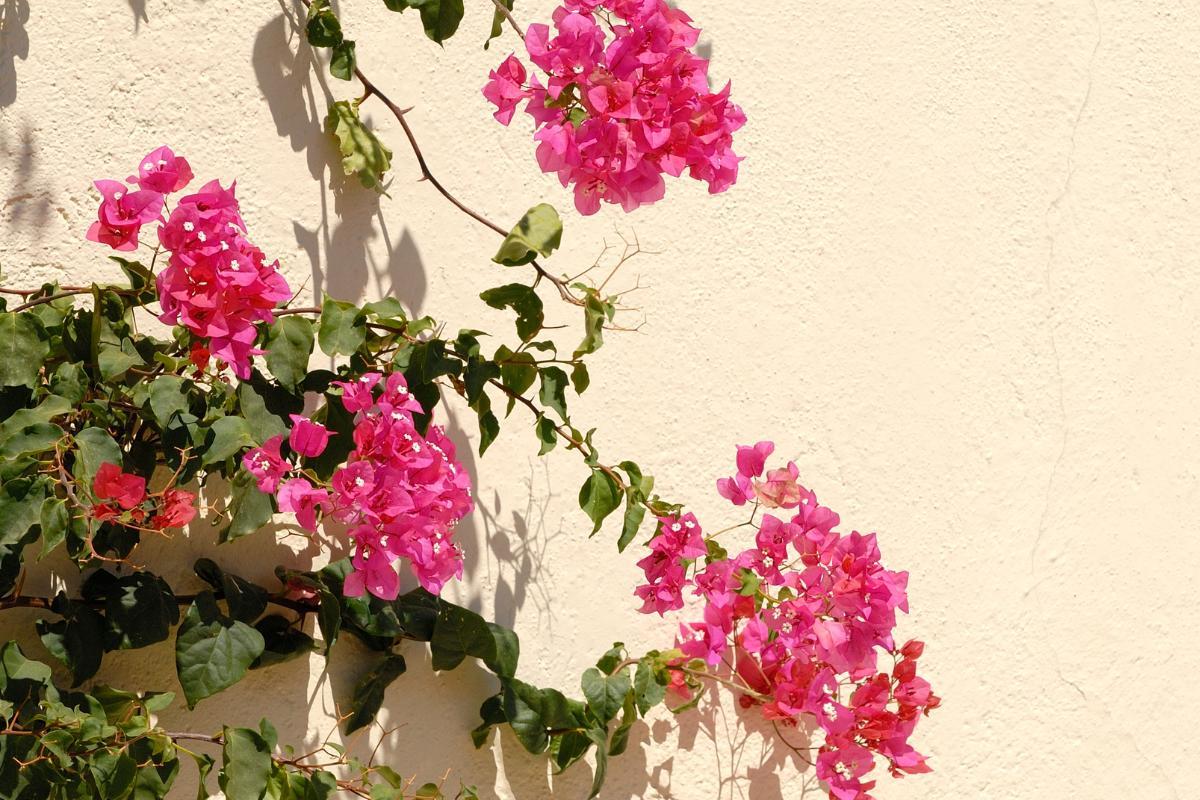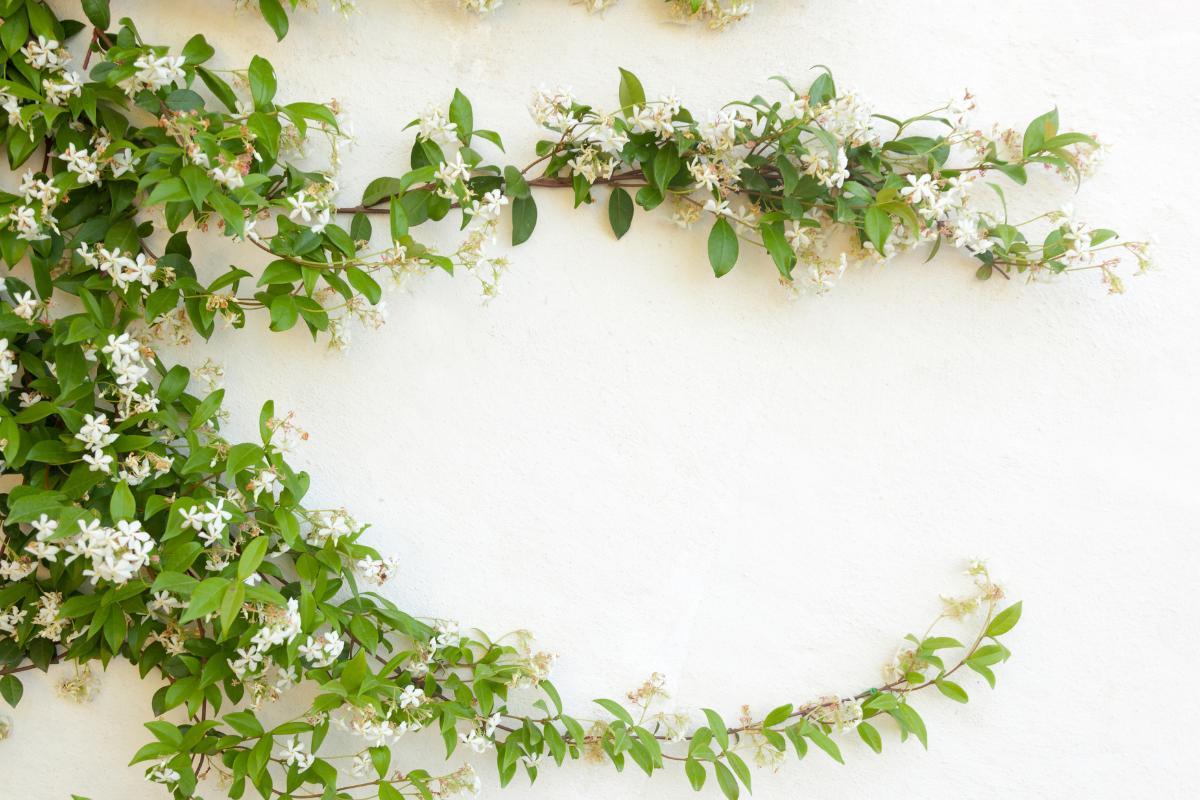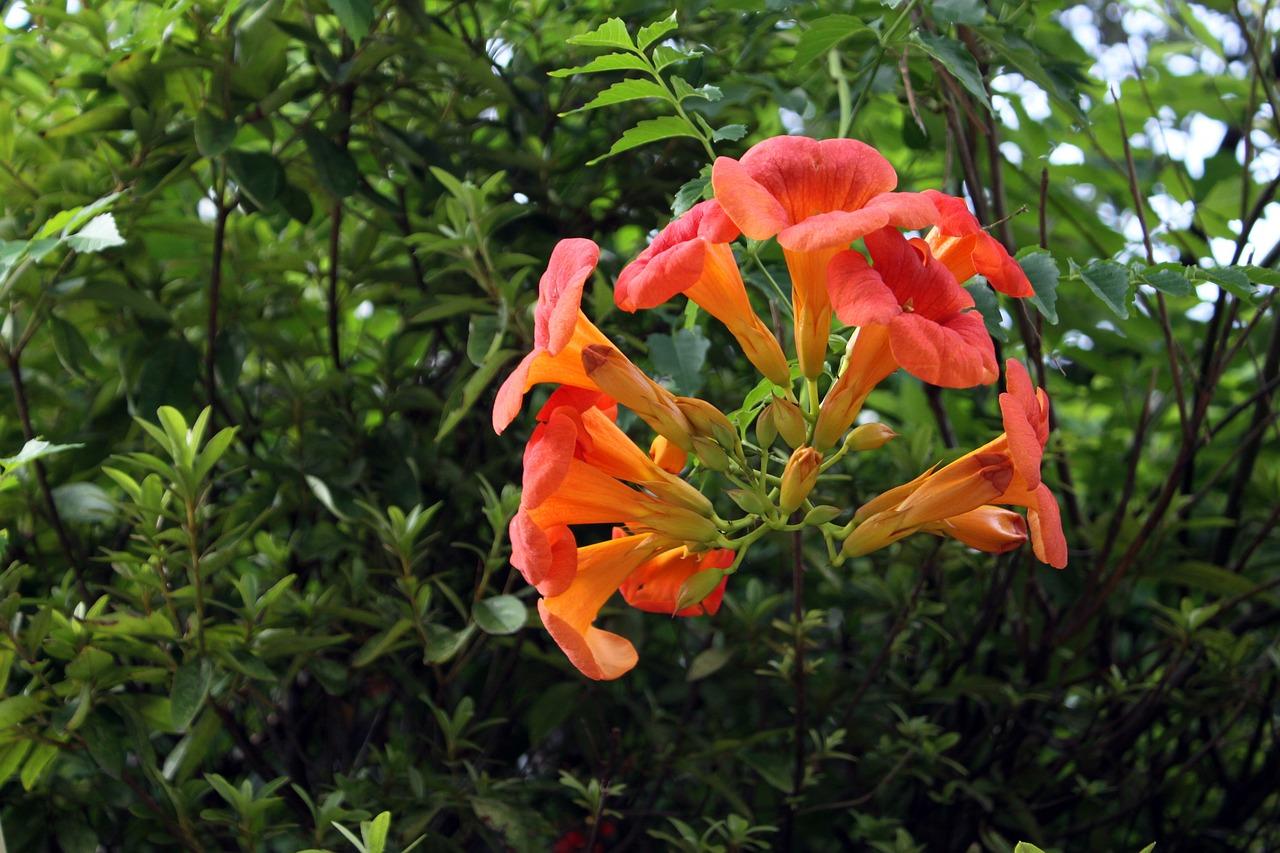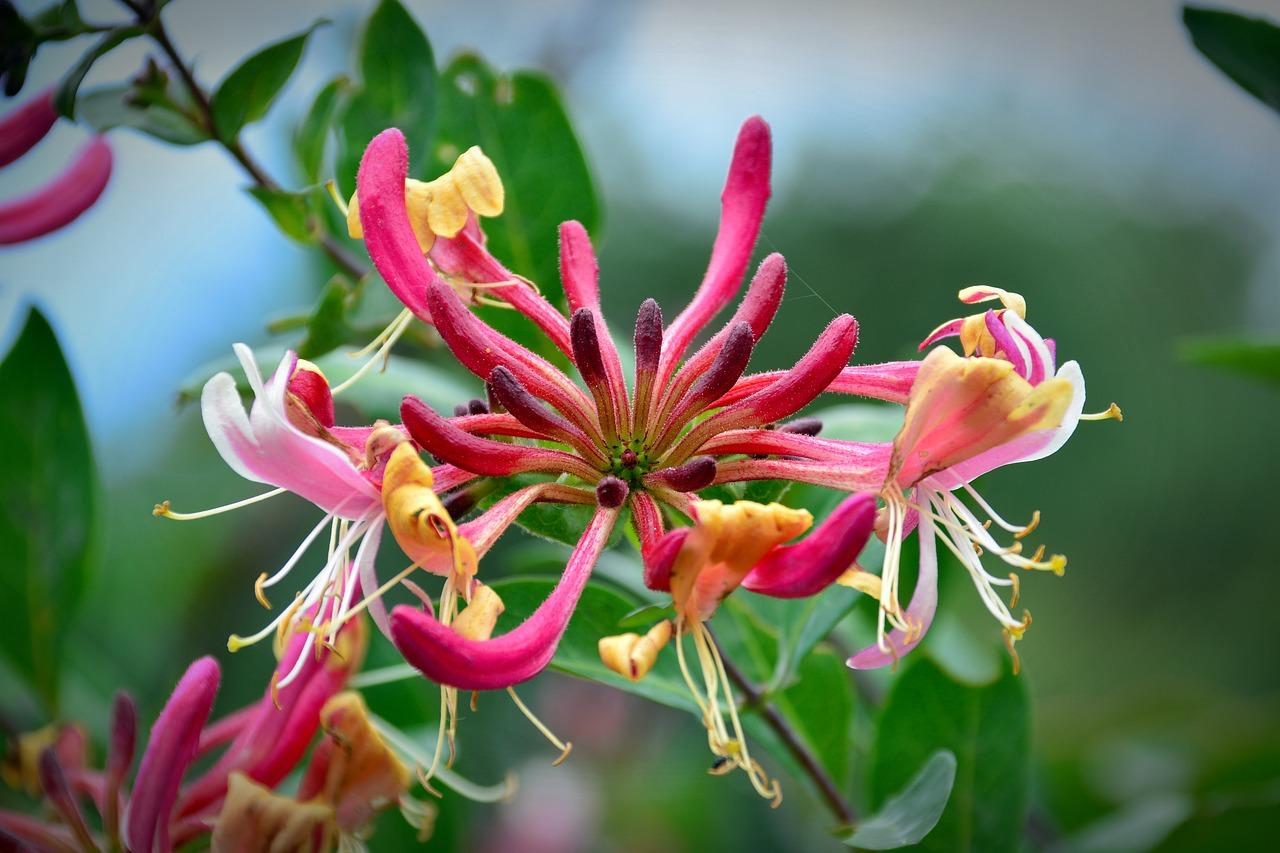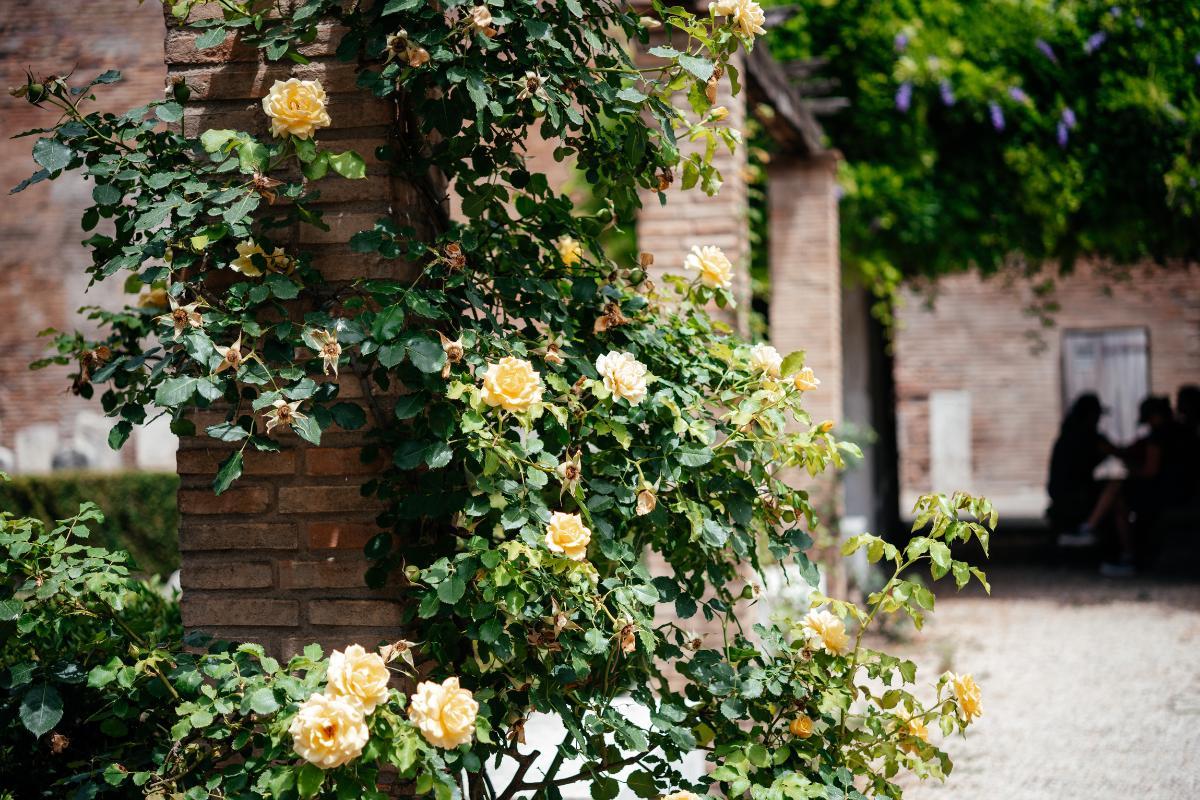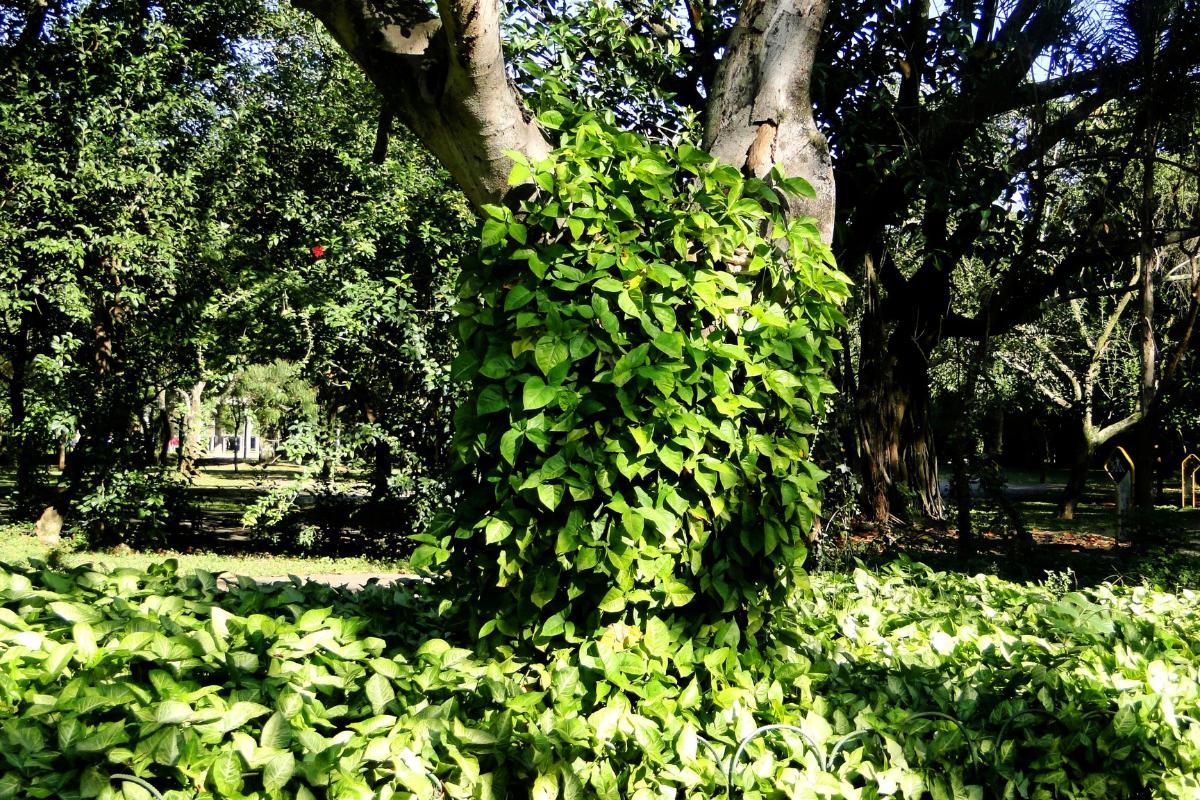Perennial Flowering Vines - Floral Vine Types


Vines are plants which have the ability to trail or climb, doing so with tendrils, aerial roots or twining stems. While not all climbing plants are vines, vines are some of the most commonly used in homes and gardens across the world. As they are able to adhere to and grow on a variety of surfaces such as walls, fences, trellises or even tree stumps. Not all vines are flowering plants, but some of the most popular are types of floral vines which have some of the most beautiful blooms in nature.
At thedailyECO, we provide 10 perennial flowering vines to see if you might like to add them to your home. We providing information on these floral vines types with photos to help you decide.
- Ivy (Hedera spp.)
- Wisteria (Wisteria spp.)
- Clematis (Clematis spp.)
- Bougainvillea (Bougainvillea spp.)
- Jasmine (Jasminum spp.)
- Passion vines (Passiflora spp.)
- Trumpet vine (Campsis radicans)
- Honeysuckle (Lonicera spp.)
- Climbing rose (Rosa spp.)
- Syngonium (Syngonium spp.)
Ivy (Hedera spp.)
Plants in the genus Hedera are commonly known as ivies and they are some of the most popular plants in gardens. This is partly due to their relative ease of care since they do not require as much irrigation as some of the other perennial flowering vines on our list. While there are many species within the genus, two of the most commonly used ivy vines in gardening are English ivy (Hedera helix) and Canary Island ivy (Hedera canariensis).
Ivy leaves can be of varying shapes, whether oval or elliptical, but they usually have three points. They are deep green in color, but they can be found with white or yellow veins in variegated varieties. Some ivy plants produce berries which are eaten by birds and other animals, although they are toxic to humans. The inflorescence of this floral vine are usually greenish-white or yellowish green in color and arranged in small clusters.
Ivy can be grown indoors or outdoors, but they need to be pruned by at least 1 cm each year. They should have fertilizer twice a month in spring and summer to help them reach their full potential. If you want to learn more about caring for indoor ivy plants, you can check out our related guide. You can also use the link below to purchase one of the most popular types of ivy used in homes:

Wisteria (Wisteria spp.)
Another of the most popular perennial flowering vines is wisteria, referring to various plants in the Wisteria genus. It is native to Eastern Australia and Asian countries such as China, Japan and Korea. It has hanging lilac flowers and is in high demand for decorating gardens due to its striking beauty.
Wisteria requires sandy and open soil, since its roots grow widely. They need six hours of sun daily. It also grows well in a large pot. In both cases, the soil must be kept moist. Although the flowers only appear during spring, the plant is perennial and does not lose its leaves unless the weather conditions are very extreme and damage it. Wisteria is included in our list of the best climbing plants with flowers.
Use the link below to purchase an already potted wisteria for planting at home:
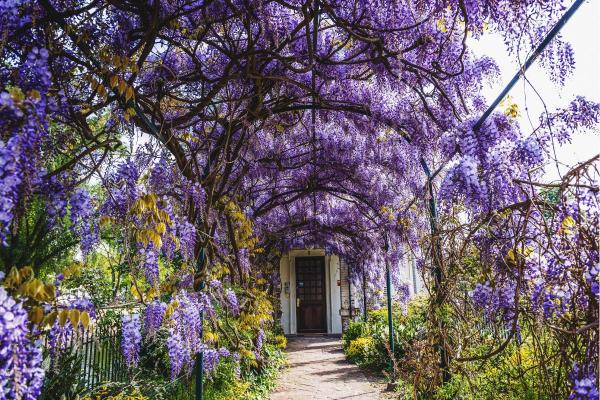
Clematis (Clematis spp.)
Clematis plants are another flowering perennial vine which have variations within the same genus. In comparison to ivy, they have quite large blooms which can be purple, pink, blue, red or white. They are great for walls or trellises, but you can keep clematis in pots also as vines used as indoor plants. They start to bloom in spring and can continue all the way to autumn.
One of the reasons why clematis is such a popular perennial flowering vine is due to its hardiness. They can thrive in relatively low light, although they will need sun to develop. They should have well-drained soil, but the type of soil can vary. Purchase a pòtted Jasmine clematis with the link below:

Bougainvillea (Bougainvillea spp.)
Bougainvillea is native to Brazil and the tropical forests of the Americas, but it tends to adapt well to almost all climates. Its flowers tend to attract various types of pollinators and we can find them in red, violent, lilac, yellow, orange, white, bicolor and, of course, the characteristic bougainvillea pink color. The flower is actually a color-modified leaf, known as a bract. The true flower is a small white or yellow flower that is inside the colored bracts.
This plant can appear in the form of a bush, liana, vines and trees. It can be woven very well in weft on a wall or fence. They bloom more when it is rainy season and require a lot of light. They only live well outside, so they cannot be kept as an indoor plant.

Jasmine (Jasminum spp.)
One of the most sought after perennial floral vines is jasmine, a plant known for its distinctive perfume as much as for their white blooms. It is very resistant and does not require extreme care. It will need fertilizer during its flowering season and it is susceptible to damage from waterlogging the soil. If frost is forecasted in winter, its roots should be covered to protect it from damage.
Many of the perennial flowering vines on our list are able to adhere by themselves to walls, trellises and other surfaces. However, jasmine vines will not attach themselves as easily. They will usually need help by being tied to a support. Take a look at our night-blooming jasmine care guide or purchase a potted star jasmine using the link below:

Passion vines (Passiflora spp.)
Also known as passion flowers, passion vines are very fast growing. When they bloom they have a tripled-crowned flower which can present in various attractive colors. They also bear a fruit known as passionfruit which can be delicious when eaten raw or when blended for juice. So that the passion vine perennial blooms throughout the year, it requires a lot of watering and full sun. If you are not an experienced gardener, we link below to a passion vine starter kit:

Trumpet vine (Campsis radicans)
Although they are known as yellow trumpet vines, the trumpet vine is more of a reddish orange color. It does have a yellowish longer part. Campsis radicans is known as trumpet vine due to the shape of its flowers which are elongated with a bell at the end like the musical instrument. They can grow to be very long, somethings even over 30 feet, so we must take this into consideration when deciding where to plant our trumpet vines. This is another fast-grwing perennial vine which can live in warm weather.
You can also learn about trumpet vines with our related guide on different plants that attract hummingbirds.
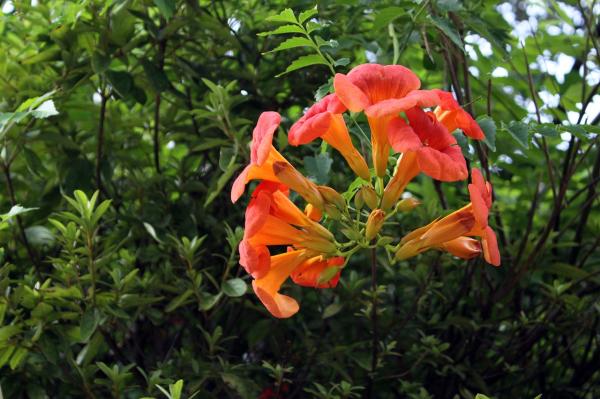
Honeysuckle (Lonicera spp.)
Honeysuckles are a perennial flowering vine from the genus Lonicera. They are twining vines which means their shoots grow in a helix pattern and twine around the structure on which is grows. The flowers of honeysuckle vines are clustered and symmetrical, although there are differences between individual species. They also bear fruit in the form of berries. Some of which are edible, but others which are toxic. Like Jasmine, they are another floral vine with a beautiful aroma, another reason many people choose to grow them in their homes.
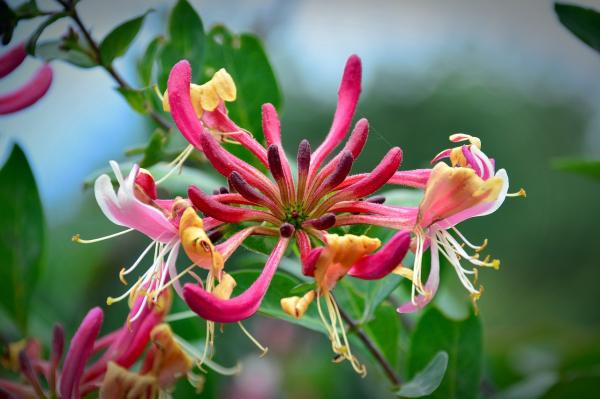
Climbing rose (Rosa spp.)
The rose is known as the queen of flowers. It is one of the most cultivated plants around the world and is often presented as a gift for various special occasions. Not all roses are vines, but some can be used for climbing and presenting their beautiful flowers. Roses have a beautiful scent and can present in almost any color. By using it as a perennial flowering vine, it can create a beautiful accent to any garden.
Roses are very attractive to insects and pests, so you have to be on the lookout. The rose bush does well with organic fertilizers and with worm castings. Good soil nutrition will produce stronger and larger flowers. You can choose other plants with a similar appearance by checking out our article on plants that look like roses.
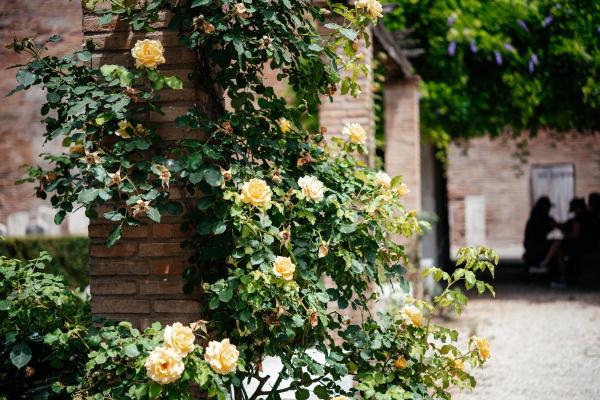
Syngonium (Syngonium spp.)
Known as arrowhead vines, Syngonium is a genus of woody vines that also produce beautiful flowers. Although most commonly used outside, they can also grow indoors. It has heart-shaped and somewhat elongated leaves and is a perennial plant. It grows up to 10 ft (3 m) in height. It can be pruned to be kept in more controlled spaces. There are very interesting varieties that have white variegated details and some exceptional ones with pink color.
Learn more about how to ensure this plant thrives with our related guide on syngonium plant care and propagation. You can also purchase your own arrowhead vines with the link below:
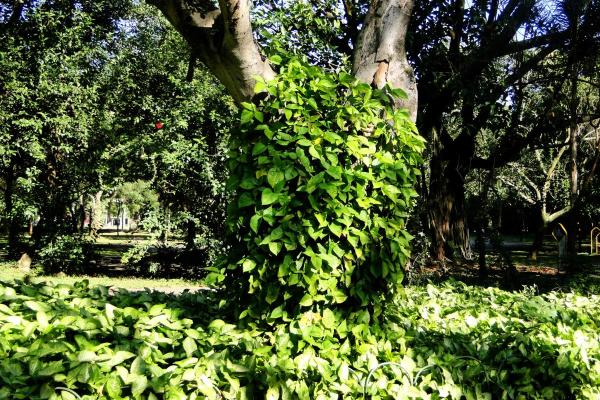
If you want to read similar articles to Perennial Flowering Vines - Floral Vine Types, we recommend you visit our Outdoor plants category.
- Buczacki, S. (1995). Climbing plants. Spain: Tursen/Hermann Blume.





